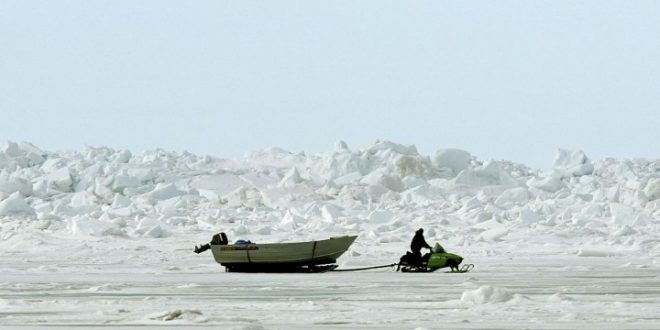Some have described it as a hum. Others describe it as a beep. What we know for sure is this: it’s weird, it’s coming from the sea floor, and the Canadian military has started investigating Nunavut’s Fury and Hecla Strait because of a ping from the deep.
They’re still stumped, and residents are clamoring for answers as the sound seems to be impacting local wildlife.
Paul Quassa, a member of the Nunavant legislative assembly, told his colleagues in October that the sound appears to be “emanating from the sea floor,” and that whatever the cause may be, it is frightening off animals in “one of the major hunting areas” in that part of the world.
The affected area, he told reporters, is “a polynya,” or an area of open water which is surrounded by ice and is typically home to large quantities of sea mammals. This past summer, though, there were very few, Quassa said, “and this became a suspicious thing” that warranted investigation.
According to BBC News, military aircraft flew over the affected waters conducting an array of multi-sensor searches, but they “did not detect any surface or sub-surface contacts,” they said in a statement sent to the UK media outlet. For now, the “acoustic anomalies,” which reports claim can even be heard through the hulls of boats, remain unexplained.
So what is causing these so-called acoustic anomalies?
What the military did find during their recent fly-over were two pods of whales and six walruses in the affected area – which is problematic, as one official told the CBC, the region is typically a migratory route for bowhead whales and various species of seals, yet few if any were found.
While the actual cause of the noises remains a mystery, that has not stopped some residents from formulating theories of their own. One such theory claims that the noises are being caused by the Baffinland Iron Mines Corporation, a local mining company which previously conducted a sonar survey in nearby Steensby Inlet. However, the company told CBC reporters that they do not have any equipment in the affect waters and are not currently conducting any surveys there.
Furthermore, Quassa said that no permits for constructing, blasting or hydrography work in the affected waters have been issued. He told the CBC that some of his constituents believe that the noises are being intentionally created by Greenpeace officials in order to frighten off and protect animals that would normally travel through the hunting grounds.
Greenpeace denies those claims, telling the CBC that they “would we not do anything to harm marine life” and “very much respect the right of Inuit to hunt and would definitely not want to impact that in any way.” The Canadian news outlet also said that they had obtained an internal document suggesting that military submarines were investigated as a potential source, but were not considered to be a likely source of the anomalies.
With answers in short supply, local legislator George Qulaut told reporters that he is concerned about the impact that the sound will have on creatures which have fed in the region for centuries. “As of today, we’re still working on it,” he said. “We don’t have a single clue.”
Agencies/Canadajournal
 Canada Journal – News of the World Articles and videos to bring you the biggest Canadian news stories from across the country every day
Canada Journal – News of the World Articles and videos to bring you the biggest Canadian news stories from across the country every day




Hmph. Good on the wildlife for avoiding the area, and not “letting” greedy Natives hunt them. They don’t need to hunt any more than a white man does. Traditional culture? If that’s so important, where’s my slave?
Overpopulation? Don’t talk to me about animal overpopulation, until human overpopulation is stopped, and global human pop lowers. But all it does is increase.
Take the log out of your own eye first, humans.
So nothing new to add as a result of the inquiry